Tokyo is a treasure trove of trails!
Whether it’s fine and fresh outdoors or chilly and rainy, whether exploring mountains or the city, And Wander presents wear and gear that make the time you spend outdoors unforgettable. Designers Keita Ikeuchi and Mihoko Mori are fascinated by outdoor recreation. They live their designs in the field, getting a firsthand feel that they translate into innovative products. What sets And Wander apart from ordinary outdoor brands is the creative outlook and philosophy they express in their recreational standards that balance timeliness with design and function.
Papersky magazine invited these outdoor enthusiasts to join them on a trek along the new Tokyo Tree Trek (TTT) route. The TTT city trail hike across Tokyo is a 60-kilometer course connecting the cities oldes, largest and most unique trees to one another.
“I thought I knew Tokyo inside out, but there were so many facets I hadn’t noticed before,” says Mori. “You absorb a considerably larger amount of information at walking speed than when traveling by train or car. I made as many discoveries walking the city as I would walking mountains,” says Ikeuchi. We spread out a map of Tokyo on the table, retraced the routes we followed, and looked back on our three-day journey.
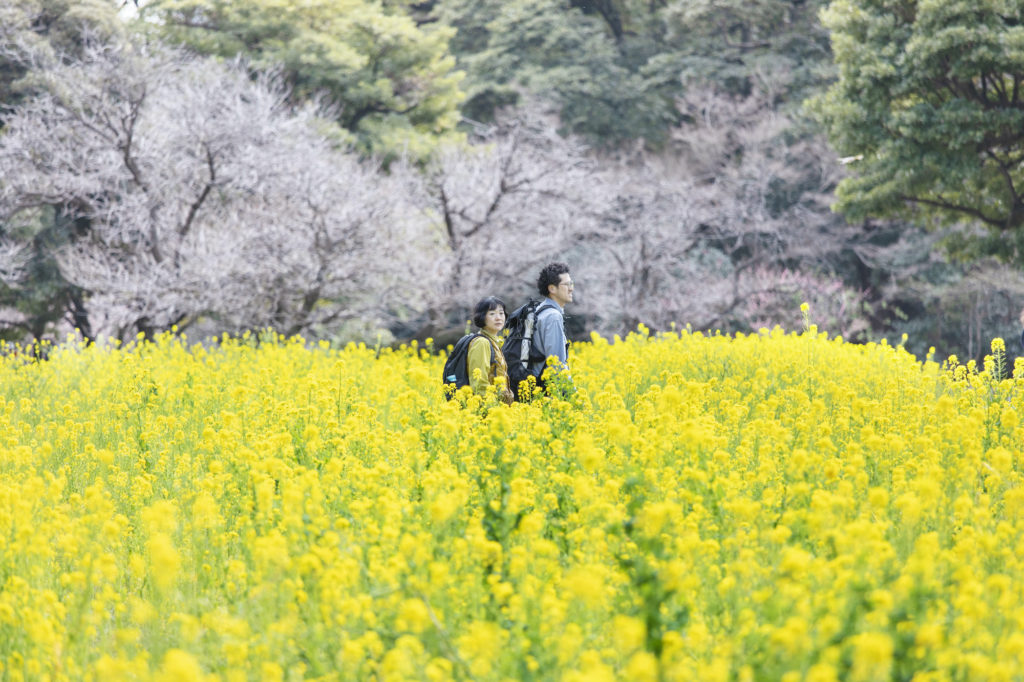
“We steered clear of the main streets and chose the alleys. That was fresh. Even within Tokyo, the look and feel of the alleys change depending on the area. For instance, Gotenyama [Shinagawa-ku] and Koishikawa [Bunkyo-ku] are both hilly upscale residential districts, but their views are completely different” (Ikeuchi).
“On mountains you follow a trail, meaning you can only choose between pressing ahead and turning back. Tokyo offers more freedom, since you can design your own route and follow it at your own pace. There’s a whole network of streets and alleys available. By choosing which you’ll take, you’re also choosing what you’ll see and feel. That’s the fun part of covering the city on foot. Having completed this thru-hike of Tokyo, I discovered its potential as a field of trails” (Mori).
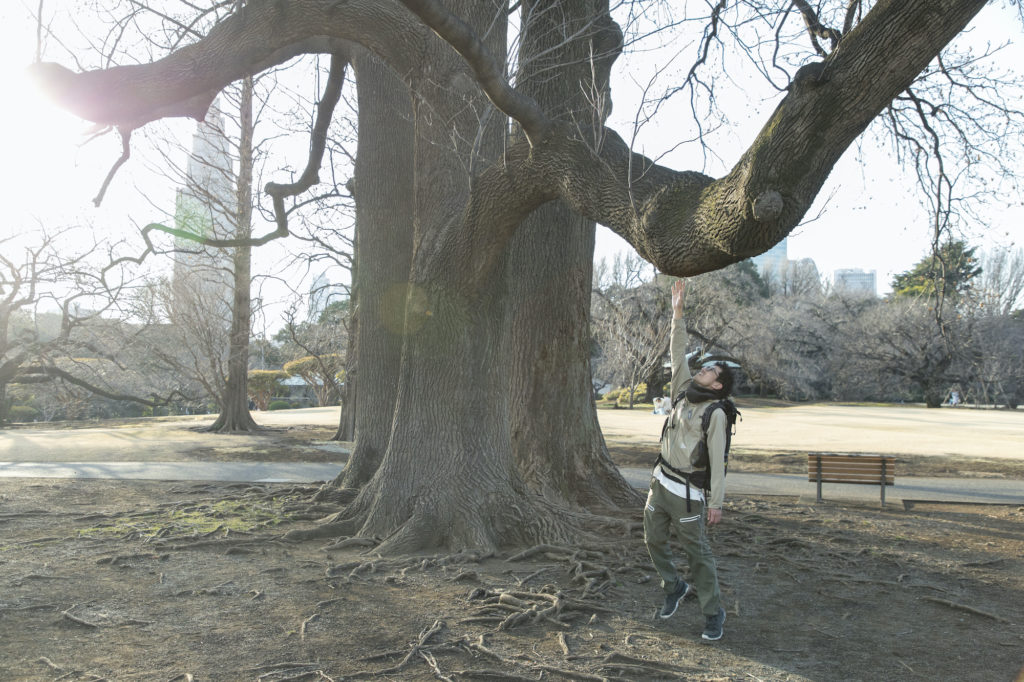
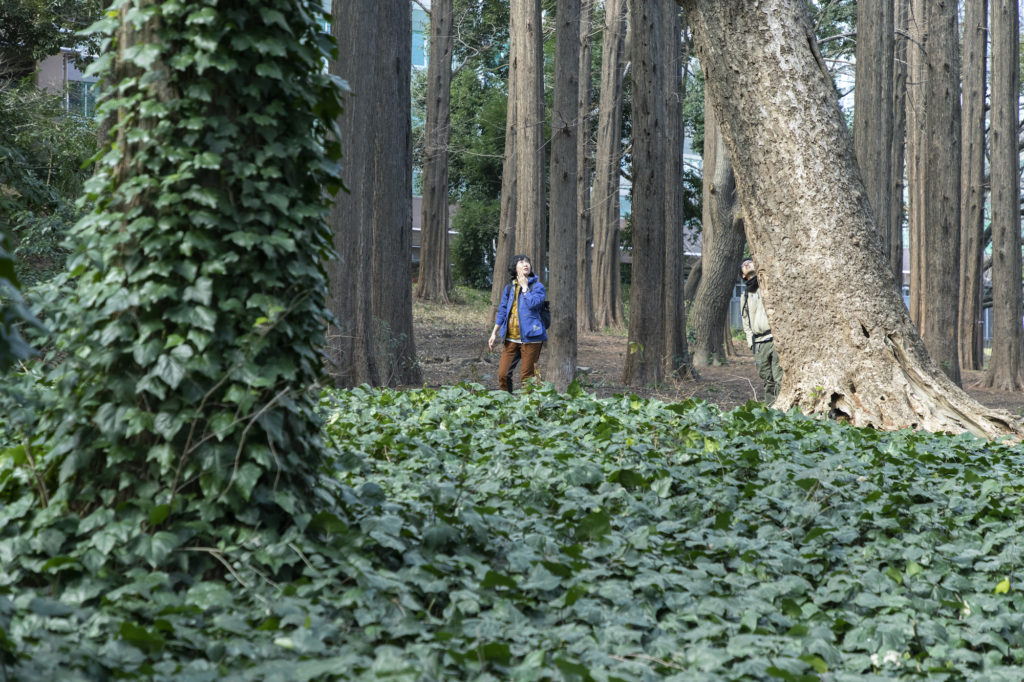
Each section has trees that tell a story. While traveling from one to the next, we discovered that large and old trees only survive in temples, shrines and parks. In fact, while we were doing research on our trail, one of the trees on our list was cut down. Residents of the Bentencho neighborhood of Shinjuku had been lobbying to save their symbolic giant Chinese hackberry, but the owner decided it was at risk of suddenly falling. This incident made us realize how difficult it is to preserve trees that benefit the public when private concerns are considered more important.
“It feels like a miracle then that residents of Yanaka were able to work together to save their Himalayan cedar. Green spaces play a role in disaster mitigation and tell a story about the history of the area and the community. The key to city development in the future is to achieve coexistence with nature” (Mori).
“Tokyo actually has an abundance of greenery. Many think Tokyo is a metropolis with no nature. But we have a far greater area of green spaces than large western cities like Paris, Milan, and New York. A focus on urban greenery could unlock a whole new world of recreation in Tokyo” (Ikeuchi).
One area of this “lush green” Tokyo with relatively few trees is Section 5. The Great Kanto Earthquake of 1923 and the Great Tokyo Air Raid of 1945 left it in burned-out ruins. Highlights of the section thus include Yokoamicho Park, in Sumida-ku, which serves as a memorial park, and the ginkgo at Senso-ji Temple, which was spared destruction but charred in the air raid. Even an area with little greenery tells a story about Tokyo’s past.
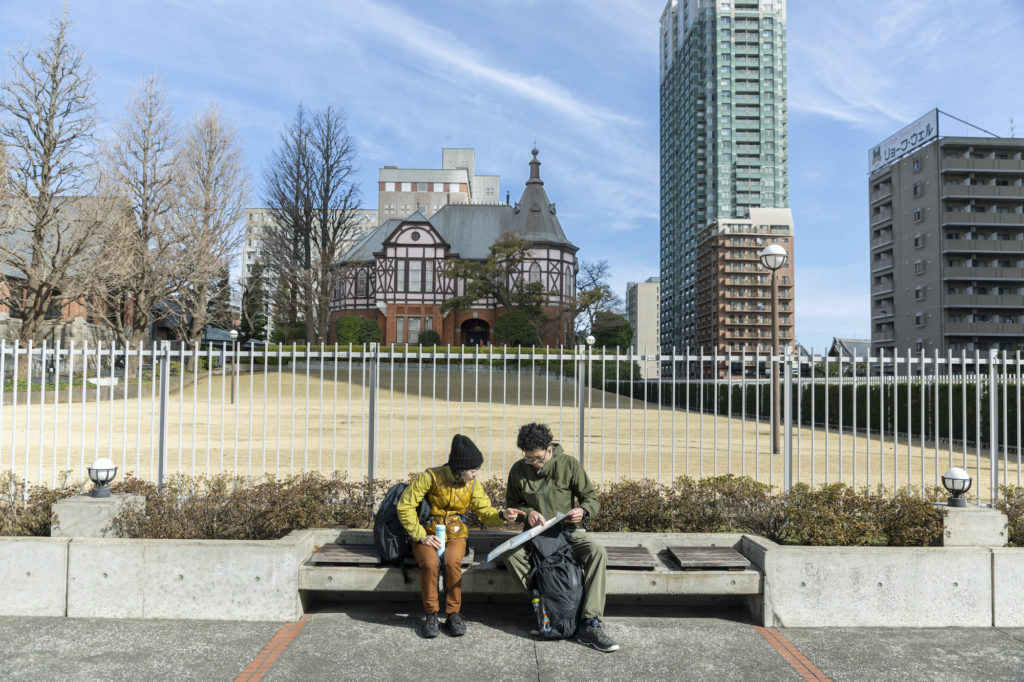
Discoveries in a cityscape with trees
While we have memories and anecdotes about each of the six sections, I asked the duo which section would be their favorite if they could only recommend one. Mori selected Section 3, following the Kanda River from Shinjuku-ku to Bunkyo-ku, “For the vivid contrast between the glamour of old feudal lord mansions and the plain modesty of the commoners’ neighborhood around Sekiguchi Sui Jinja.” In the second half of the 16th century, when Tokugawa Ieyasu occupied the Edo Castle, he first built feudal lord mansions and temples like Gokokuji that were associated with the samurai class. He then established the Nakasendo Route, which attracted merchants and helped the area develop into a castle town. Mori recognized these roots of Edo and Tokyo in the cityscape of Section 3.
Ikeuchi selected Section 4, covering the Yanaka, Nezu, and Sendagi neighborhoods known collectively as Yanesen. The lasting remnants of the shitamachi culture are the result of a deliberate effort. During the bubble boom of the late 1980s, residents took a stand against land sharking and rampant development and led the move to restore and preserve their community. Ikeuchi sensed the residents’ love of their district from the Himalayan cedar as well as the trees planted in pots before every house.
“Yanaka also holds a special place in my memory because we stayed overnight, and I saw the neighborhood through the eyes of a traveler. Going home for the night interrupts the journey and resets your mood, whereas booking a room keeps your motivation at peak level. I recommend this to everyone. It’s a great form of recreation—booking a room in your home city of Tokyo and kindling your own traveler’s spirit.”
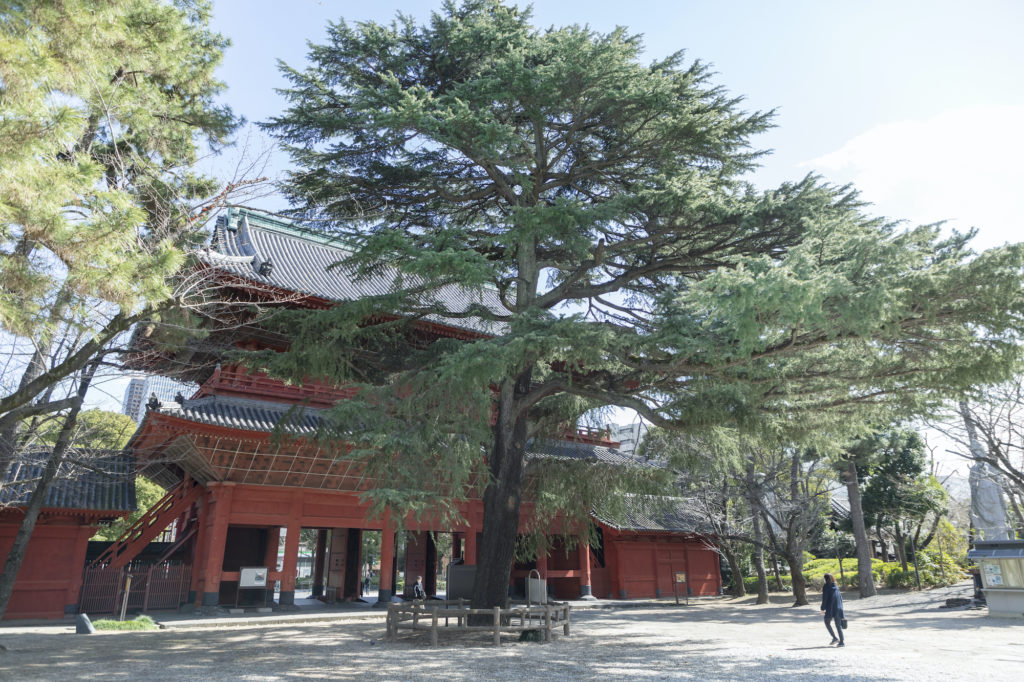
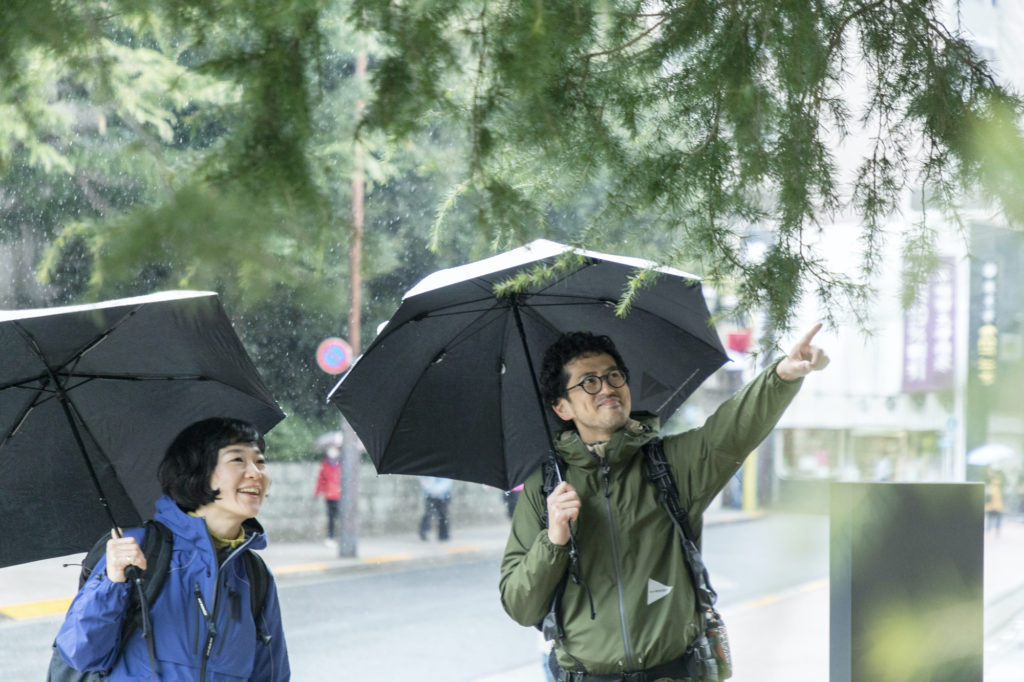
TTT gave the duo a new lens through which to see their familiar Tokyo. Any advice for those who might follow in their footsteps?
“Travel light. Carry the bare minimum. Unlike the mountain, there are stores where you can buy whatever you need. The less you carry, the more you can appreciate your surroundings, and the broader your choice of routes. You can afford to make a detour or visit one more tree that wasn’t on your list” (Ikeuchi).
“With TTT, you also get to discover delicious snacks and treats along the way. We found traditional Japanese sweets in Kita Shinagawa, bite-sized inari-sushi in Azabu, chai and sandwiches in Sendagi, roasted beans from a prestigious old shop in Kasuga . . . Keep your eyes open as you walk. You can have lunch in a café, but I recommend ordering takeout and eating under a tree—that’s more TTT style” (Mori).
Style your own hiking journey and make your own discoveries. That’s the best part of traveling on foot. What will your style be and what discoveries will your make?
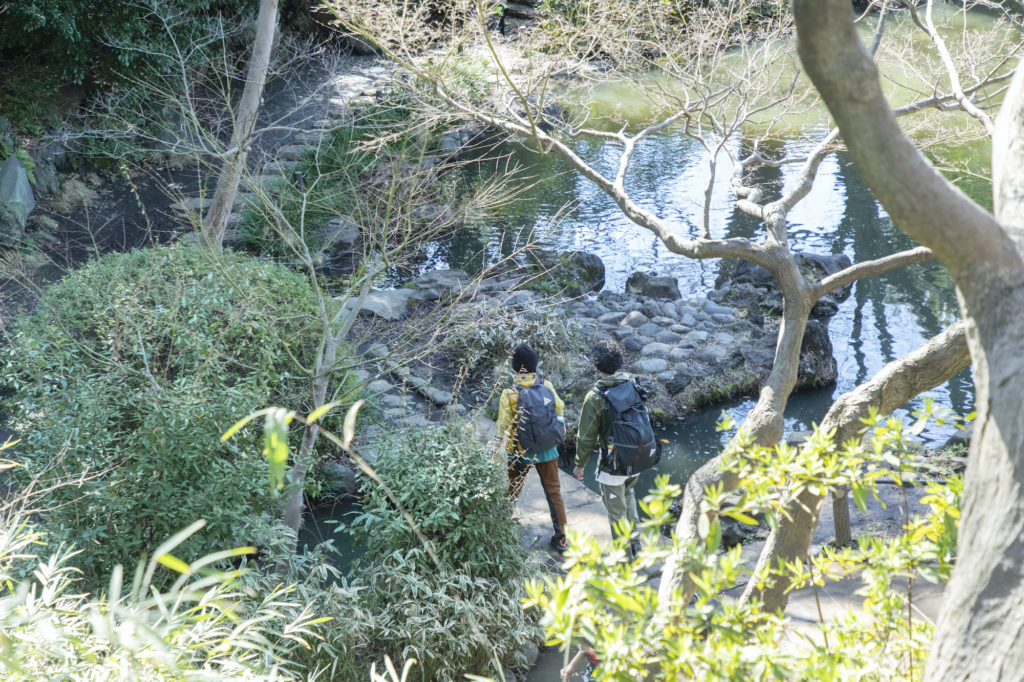
PAPERSKY has created a 60km trail that connects trees in Tokyo. This original route starts from Shinagawa-juku (Kita-Shinagawa), which welcomed travelers as the gateway to Edo (old name for Tokyo), and winds around in a clockwise direction to the Imperial Palace, where Edo Castle once stood.
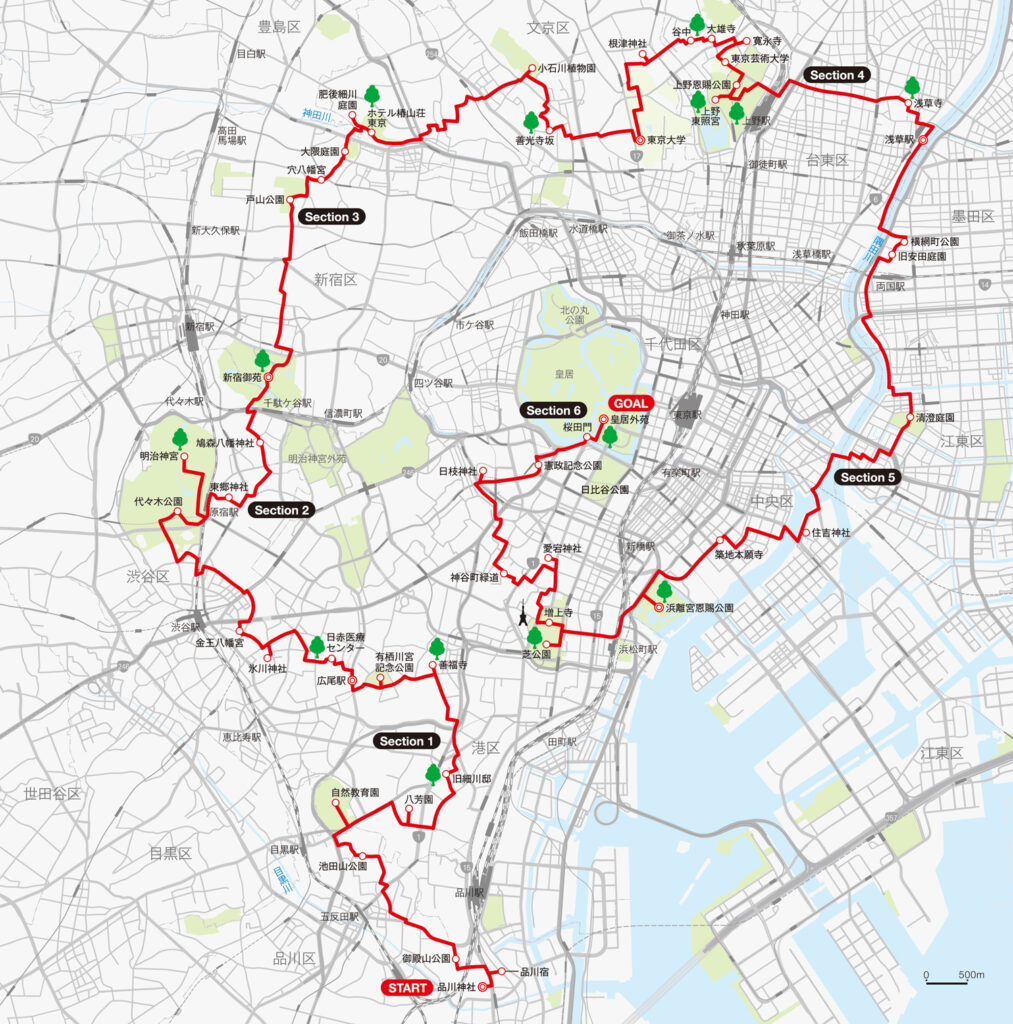
and wander
and wander is a Japanese clothing brand founded in 2011 by Keita Ikeuchi and Mihoko Mori. The brand is a collection of ideas based on the two’s interest in hiking, camping and the outdoors. The focus is on simple products with high functionality and a fashionable aesthetic that can protect and dress you both in city and mountain habitats.
www.andwander.com












